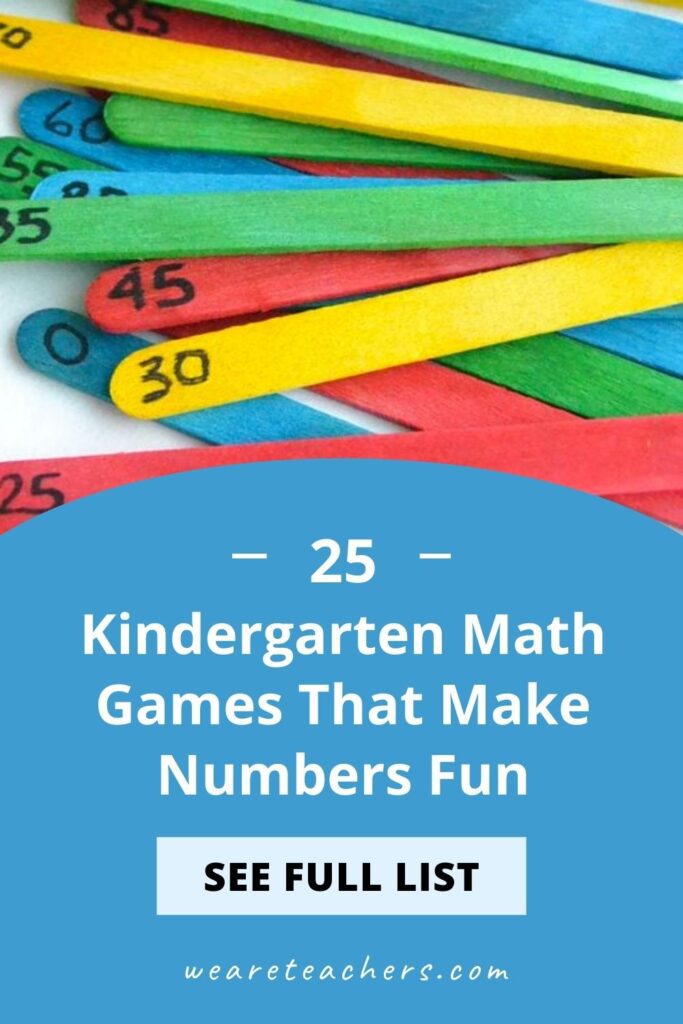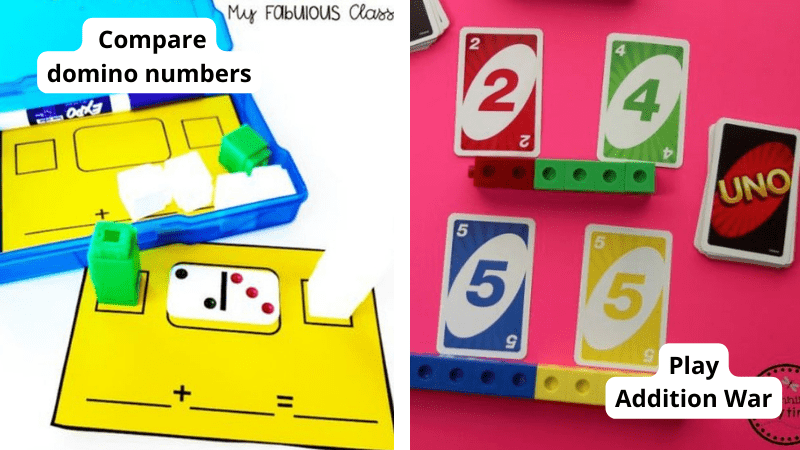
Looking for ways to make math fun for young learners? Check out these kindergarten math games! They teach all the basic math skills kindergartners need to master and are sure to engage every kid in the learning process.
(Just a heads up, WeAreTeachers may collect a share of sales from the links on this page. We only recommend items our team loves!)
1. Conquer cardinality with penguin dominoes
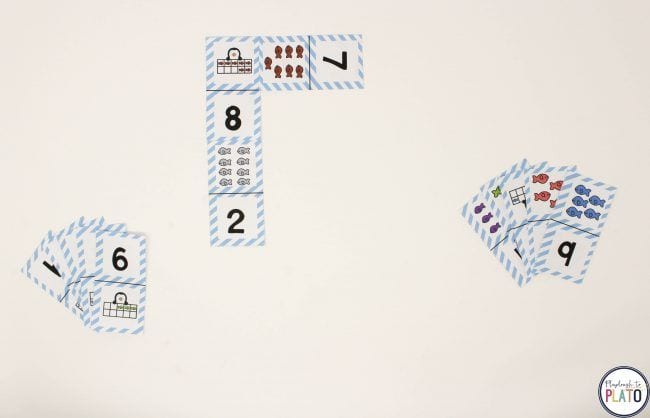
Kindergarten math students work to master cardinality, understanding that written numerals correspond to the number of items pictured. These free printable penguin dominoes make the concept fun to practice.
Learn more: Playdough to Plato
2. Put together puzzles to gain number sense
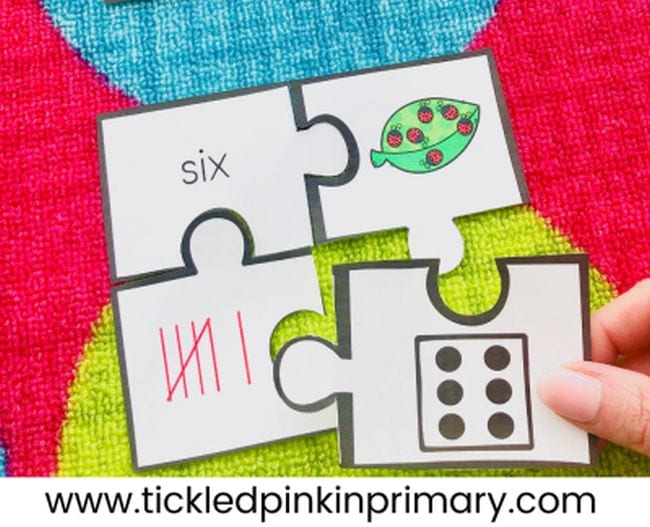
Kindergarten math students learn to understand that numbers can be represented in a variety of ways. These free printable puzzles help them practice those skills.
Learn more: Tickled Pink in Primary
3. Play teen-number bingo
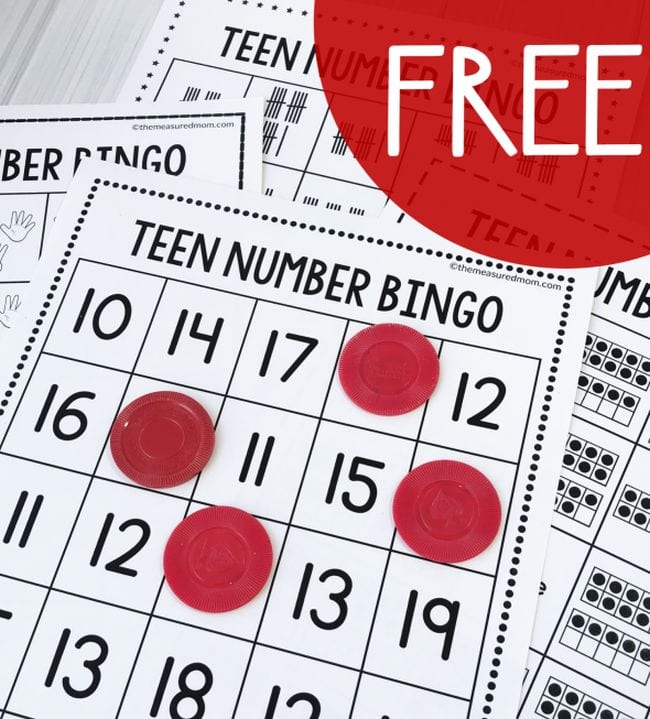
This free printable game helps little ones master their numbers from 11 to 20, both as numerals and represented on ten-frames.
Learn more: The Measured Mom
4. Stack cups and count to 100
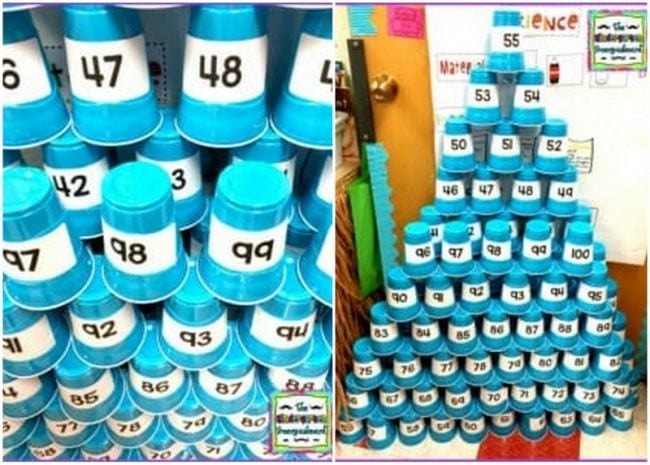
Kids love stacking things, so they’ll get a kick out of kindergarten math games that make use of stackable cups. This one has them doing it with 100 cups while they count! Turn it into a competition by putting them in teams and timing them to see who can finish the task the fastest.
Learn more: Kindergarten Smorgasboard/100 Cups
5. Visit the skip-counting store
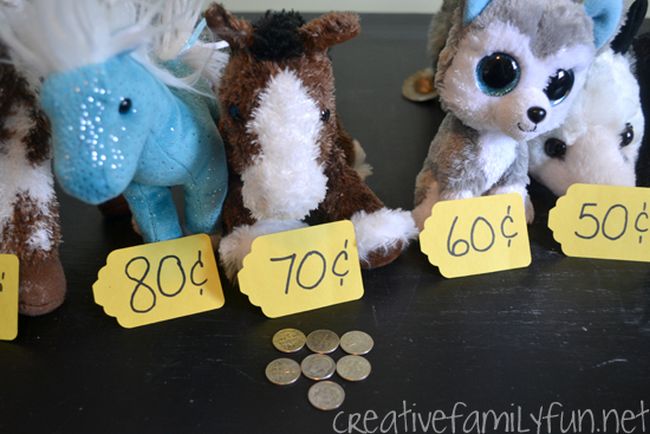
How fun is this? Grab some toys and label them with price tags in increments of 10 cents. Give kids a handful of plastic dimes, and have them count out the amount needed for each “purchase.”
Learn more: Creative Family Fun/Skip Counting Store
6. Have a rubber duck race
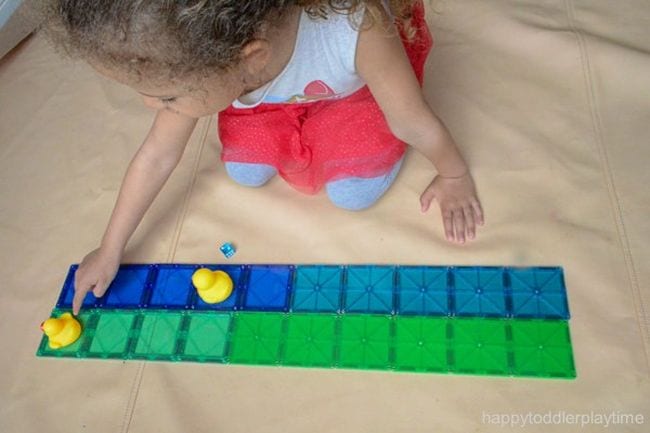
In this game, kids race to see who can be the first to get their rubber duckies to 10 (or any number you choose). They roll a die and lay out tiles to move their duck. The twist? To get to 10 at the end, they must roll the exact number they need—no going over! Kindergarten math games like this one are terrific for practicing counting on, basic addition, and making 10.
Learn more: Happy Toddler Playtime
7. Practice counting on with cards and dice
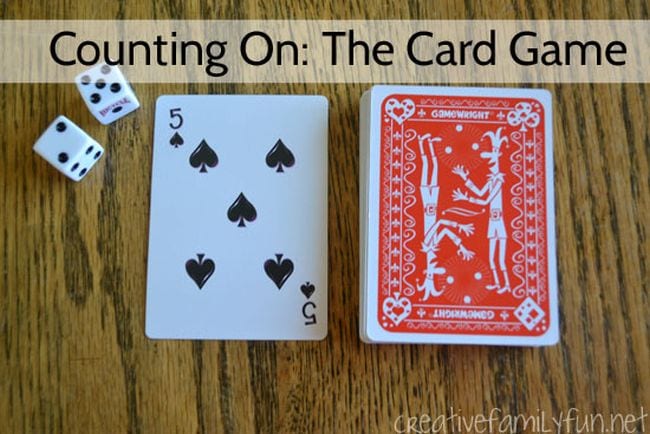
Remove the face cards from a deck of playing cards and grab a pair of dice. The first player turns over a card and then rolls the dice. The number on the dice indicates how far they “count on” from the card. (For example, a player turns over a three and rolls a four. They say, “Three: four, five, six, seven.”) If the player gets it right, they keep the card, and the other player(s) get a turn.
Learn more: Creative Family Fun/Counting On
8. Skip-count with craft sticks
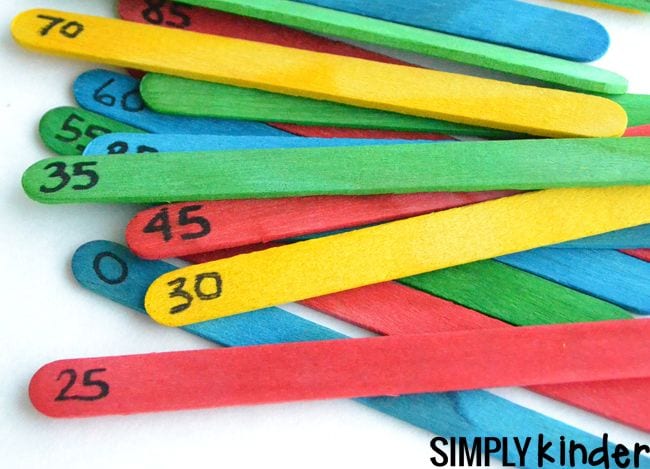
There are endless ways to use craft sticks in the classroom. For this game, number a series of colorful sticks by fives, as shown. Kids can practice by putting them in order first. Then, have a student draw a stick and count on by fives from that number to 100—if they draw 75, they then count 75, 80, 85, 90, 95, 100. If they get it right, they keep the stick, and the next player takes a turn.
Learn more: Simply Kinder
9. Match teen numbers
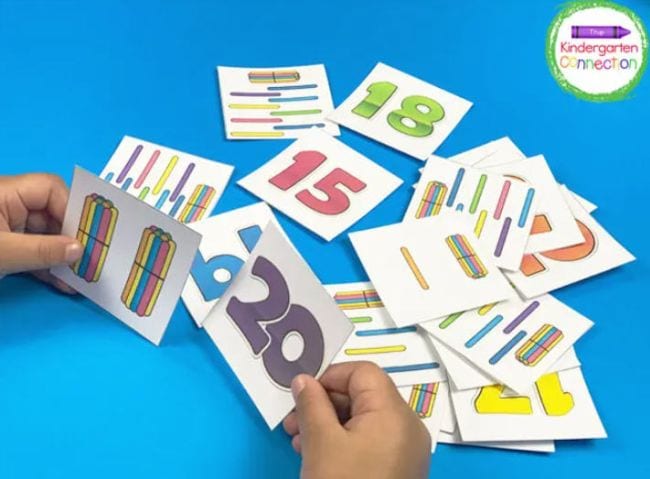
Once they’ve mastered the numbers 1 to 10, it’s time to understand how those numerals add up to make bigger numbers. These free printable cards show numerals and matching bundles of sticks that deconstruct each teen number into tens and ones.
Learn more: The Kindergarten Connection
10. Compare numbers with dominoes
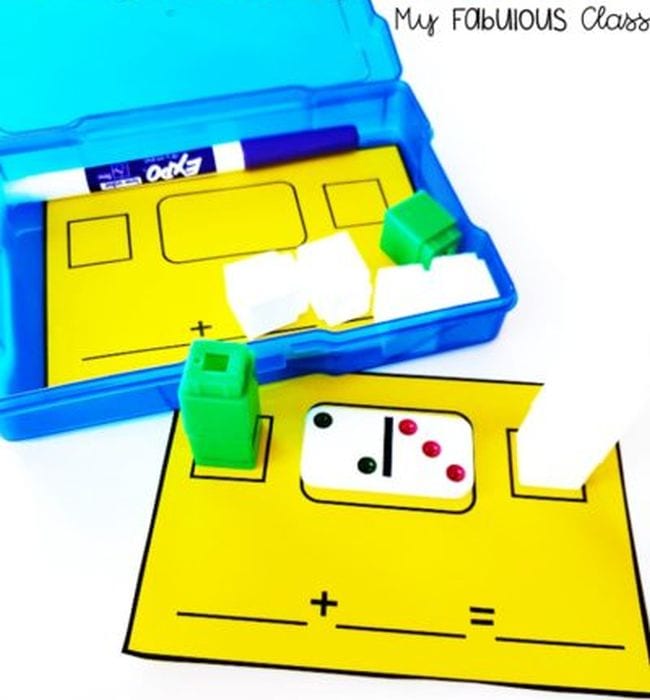
Kindergartners learn to compare numbers to determine which is larger and which smaller. Stacking math cubes based on the numbers on dominoes is a fun, hands-on way to compare the two numbers side by side, making it easier to see the difference.
Learn more: My Fabulous Class
11. Face off and compare numbers
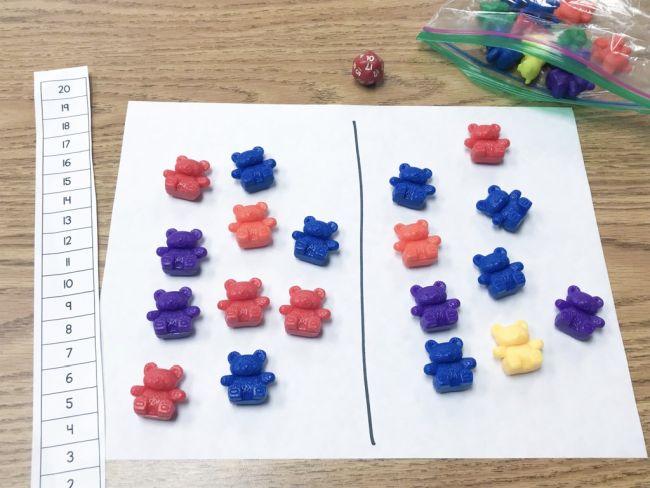
You’ll need some small toys for this game, as well as polyhedral dice. Kids roll and place the number of items on their side. Then, they compare the two to see which is bigger.
Learn more: Natalie Lynn Kindergarten
12. Make 10 with two-sided chips
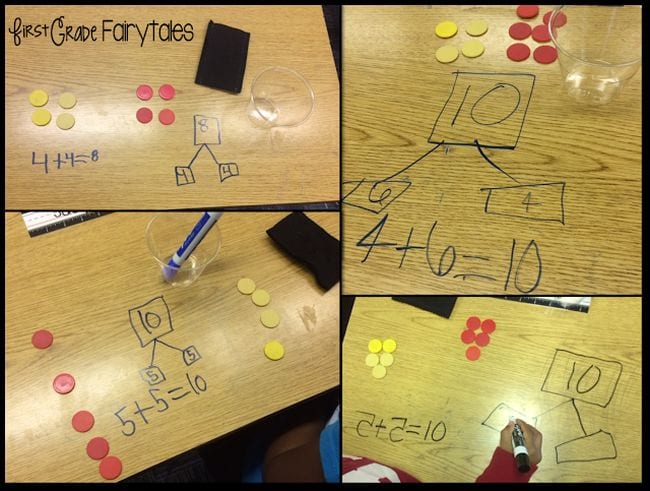
You’ll need counting chips that are a different color on each side for this activity. Kids shake up 10 chips in a cup and pour them out on the table. Then they see how many they have of each color and write that number bond to make 10.
Learn more: First Grade Fairytales
13. Throw snowballs to make 10
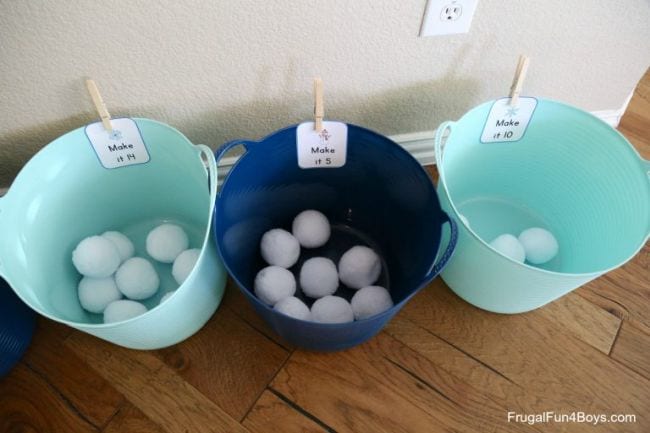
Make “snowballs” from paper (or any way you like), then place them in a bucket at one end of the room. Start kids out by having them toss snowballs into another bucket until they reach 10 (or any target number). Then, up the challenge by placing some snowballs in each bucket and have kids figure out how many more they need to toss in to make 10.
Learn more: Frugal Fun for Boys and Girls—Snowball Math Games
14. Use Uno cards to play addition war
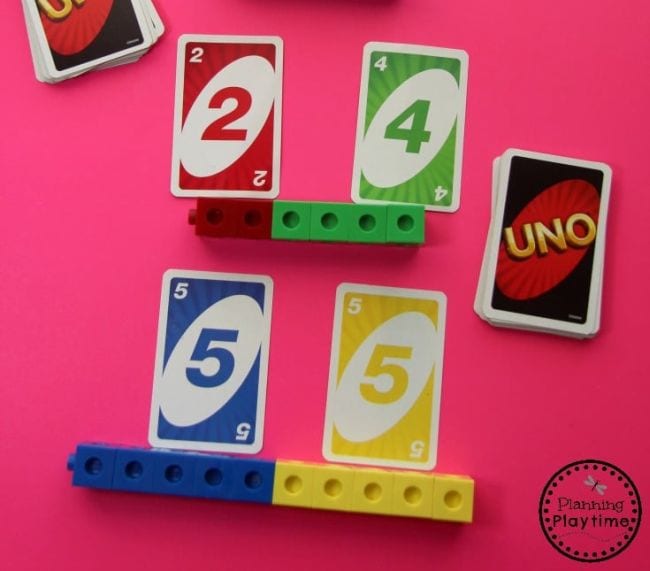
In the card game War, players each flip an Uno card, and the one whose card is greatest takes them both. In this twist on one of our favorite kindergarten games, players each flip two cards. They then use counting blocks to represent the numbers and count on or add to find the sum. The largest sum wins the hand, and play continues.
Learn more: Planning Playtime—Addition Game
15. Roll and add for fluency within 5
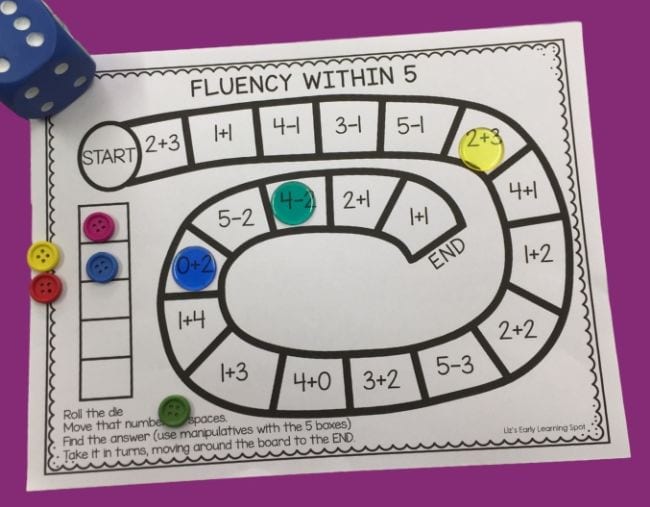
Kindergarten math students work to become fluent in adding and subtracting within 5. This free printable board game makes it fun!
Learn more: Liz’s Early Learning Spot
16. Get four in a row and learn place value
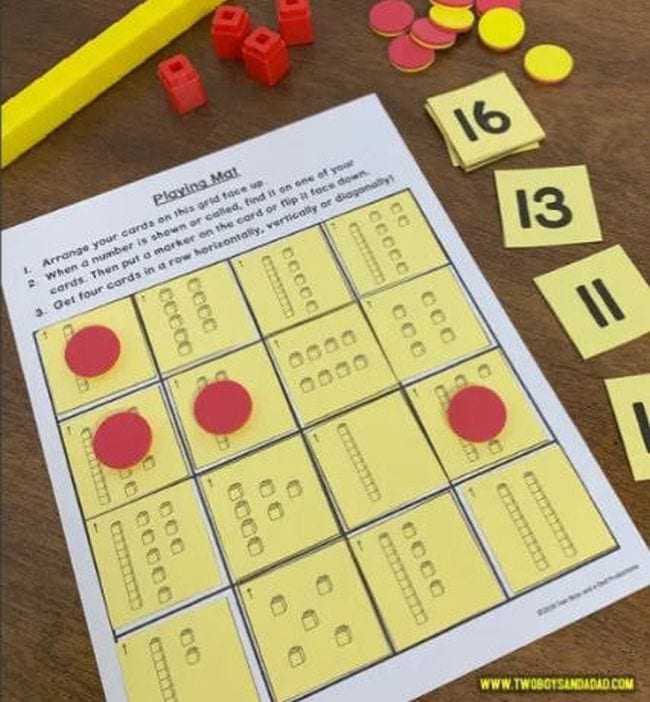
This customizable game helps teach the early place-value concept of tens plus ones. Get it for free at the link.
Learn more: Two Boys and a Dad
17. Bowl and subtract within 10
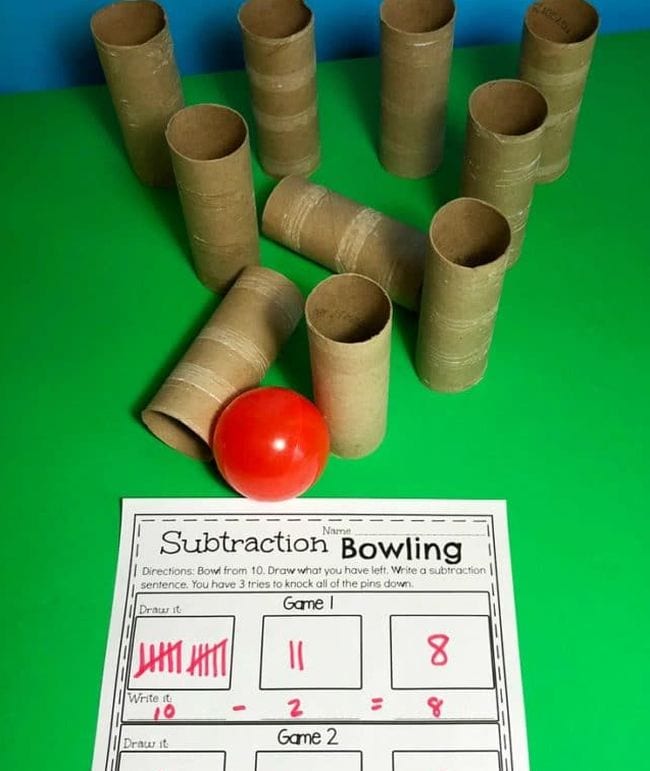
Set up a toy bowling pin set (or make one from plastic bottles or toilet-paper tubes). Kids bowl and see how many pins they knock down, subtracting that number from 10. Then they repeat, this time subtracting from the previous answer. First to get to zero wins!
Learn more: Planning Playtime—Subtraction Worksheets
18. Get off my boat!
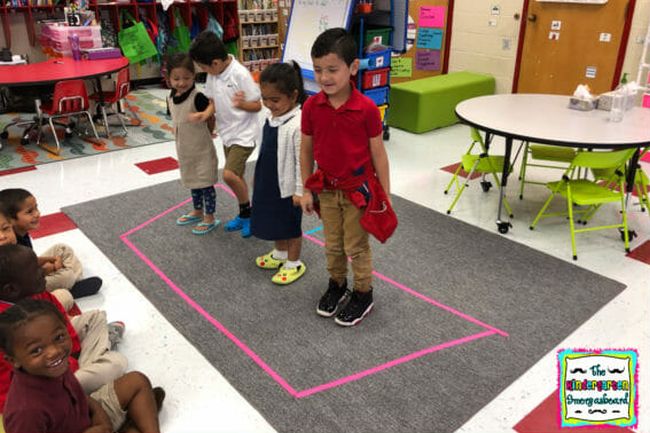
So simple, so engaging, so fun! Use tape to outline a boat shape on the floor (or try this outside with sidewalk chalk). Let some kids board the “boat,” then make some get off. Use those numbers to write a subtraction number sentence and solve the equation!
Learn more: Kindergarten Smorgasboard—Get Off My Boat!
19. Drive and compare numbers to music
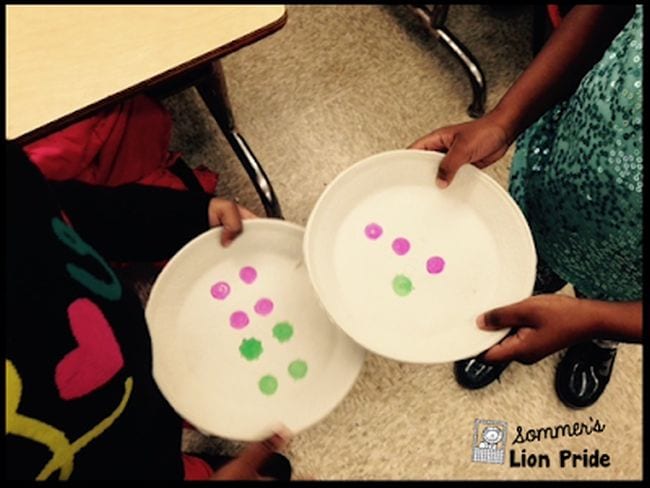
Prep for this game by using dot markers on paper plates as shown (visit the link below for more examples). Each kid takes a plate then uses it to “drive” around the room as you play music. When the music stops, they find a nearby partner and compare what they see on each other’s plates (e.g., “8 dots is more than 4 dots. 1 green dot is less than 4 green dots.” Then start the music up and repeat!
20. Build a weigh station
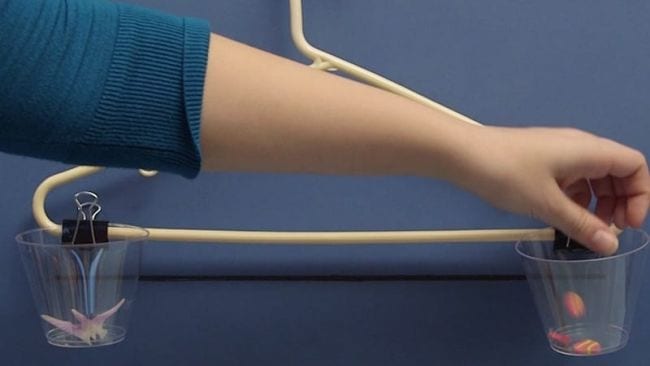
Use a hanger and plastic cups to build a super-simple weigh station. Kids will love dropping items into the cups to see which weighs more or less. Turn it into a game by having them try to guess which object weighs more first or how many of one item equals another.
21. Battle it out in ribbon war
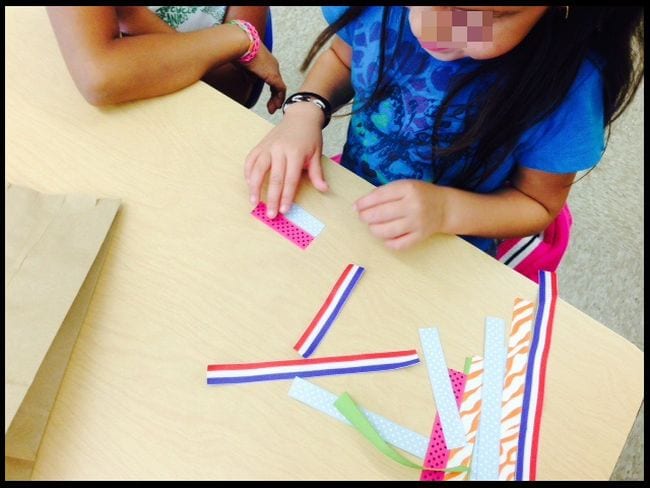
Looking for kindergarten math games that teach non-standard measurement? This idea is fun and easy. Cut colorful ribbons into a variety of lengths and place them in a bag. Each student pulls a ribbon from the bag. Then, put students in pairs and have them compare their ribbons to identify the longer one. The student with the longer ribbon keeps both, and the game continues.
22. Hold a shape scavenger hunt
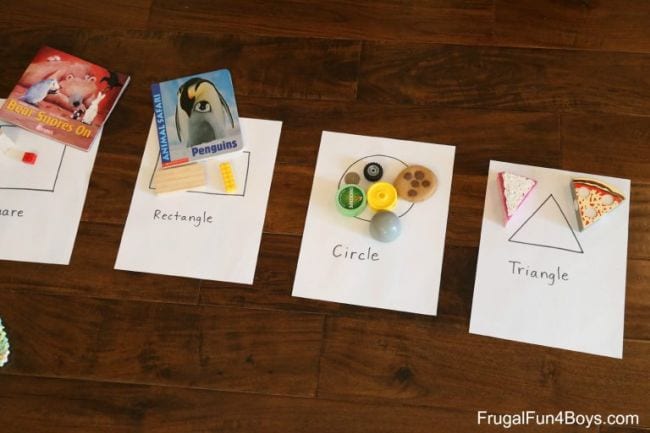
Kindergarten math students are learning to recognize shapes in their environment and also to categorize and sort. This scavenger hunt does it all! Send them out to find objects in the room that match the shapes. Then count and compare to see how many you have in each category.
Learn more: Frugal Fun for Boys and Girls—Shape Scavenger Hunt
23. Hop along a shapes maze
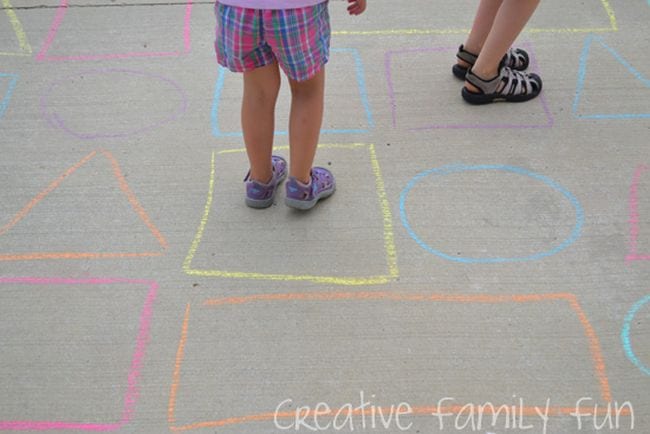
Use sidewalk chalk to lay out a shape maze on the playground or driveway. Choose a shape and hop from one to the next, or call out a different shape for every jump!
Learn more: Creative Family Fun—Shape Maze
24. Make a match to learn shapes
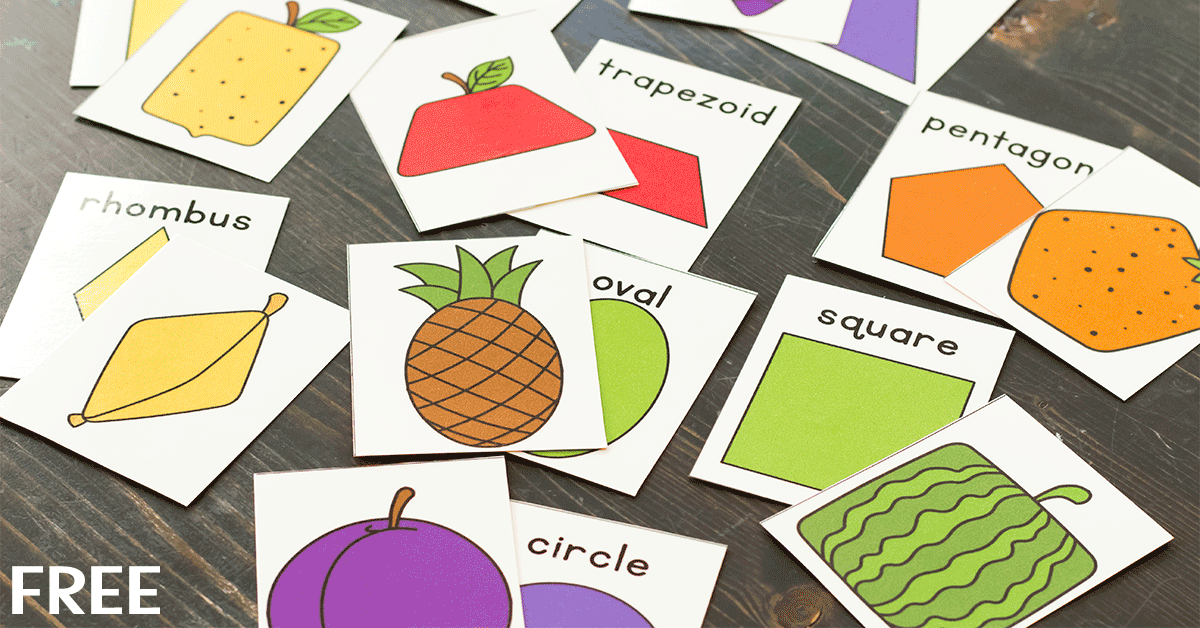
Grab these free printable memory cards at the link. Then play and learn the basic shapes.
Learn more: Life Over C’s
25. Guess the mystery shapes
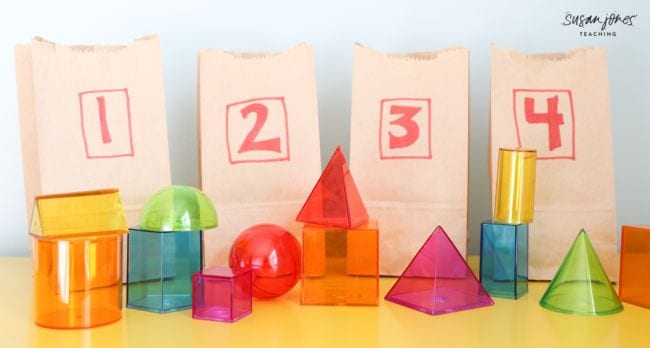
Work on geometry terms like “sides” and “vertices” when you sort shapes using these attributes. Start by placing 3D shapes into paper bags and asking students questions like “The shape in this bag has 4 sides. What could it be?”
Learn more: Susan Jones Teaching
Love these kindergarten math games? You’ll also enjoy these 50 Kindergarten Math Word Problems of the Day!
Want more articles like this? Subscribe to our newsletters!
